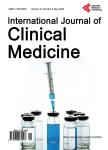A 5-Year Review of Gynaecological Oncology Patients Managed by a Fast Track Surgery Program
A 5-Year Review of Gynaecological Oncology Patients Managed by a Fast Track Surgery Program作者机构:Sydney Cancer Centre Royal Prince Alfred Hospital Sydney Australia The University of Sydney Sydney Australia NHMRC Clinical Trials Centre Sydney Australia Sydney Gynaecological Oncology Group Sydney Australia Sydney Cancer Centre Royal Prince Alfred Hospital Sydney Australia The University of Sydney Sydney Australia
出 版 物:《International Journal of Clinical Medicine》 (临床医学国际期刊(英文))
年 卷 期:2014年第5卷第1期
页 面:36-41页
学科分类:1002[医学-临床医学] 100214[医学-肿瘤学] 10[医学]
主 题:Fast Track Surgery Enhanced Recovery Optimized Recovery
摘 要:Introduction: The aim of this study is to provide a comprehensive 5-year audit of patients undergoing laparotomy for suspected or confirmed gynaecological malignancy to document the frequency and incidence of adverse events and to investigate factors associated with shorter length of stay and readmission to hospital. Methods: A 5-year surgical audit of the period commencing 2008 and concluding 2012. All patients undergoing laparotomy were included in the audit without exclusions. Approval was granted by the local Ethics Review Committee. Results: Four hundred and twenty-seven patients underwent laparotomy for suspected or confirmed gynaecological malignancy and were managed by Fast Track Surgery (FTS) principles. Average age was 54.8 years and average weight and BMI were 73.4 kg and 28.1 respectively. Ultimately 254 (59%) patients had confirmed malignancy. Average surgery duration was 2.36 hours and average estimated blood loss (EBL) at surgery was 262 mL. Median and mean LOS was 3.0 and 3.5 days respectively with 125 (29%) patients discharged on day 2. Overall transfusion rate was 5%. Other adverse events in decreasing frequency were hospital readmission (3.7%), significant wound infection (3%) and unplanned High Dependency Unit (HDU) admission (1.4%). All other adverse events were uncommon with rates 0.5%. Factors associated with a short LOS included year of surgery, age, performance status, malignant vs benign pathology, the use of COX-2 inhibitors, operation time, incision type, transfusion, and radical hysterectomy, at least 1 complication, if patients tolerated early oral feeding (EOF). In multivariable analysis, year, age, performance status, the use of COX-2 inhibitors, operation time and incision type were significant. Factors associated with readmission included the use of COX-2 inhibitors, operation time, performance of a lymph node dissection, return to operating theatre, operation category at least 1 complication, and in multivariable analysis lymph no



